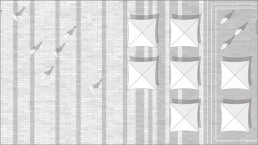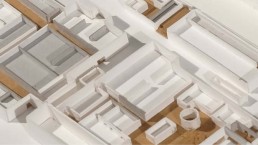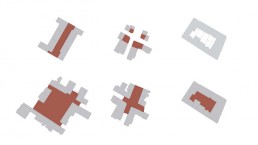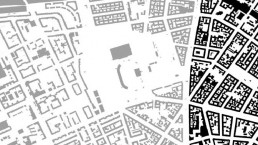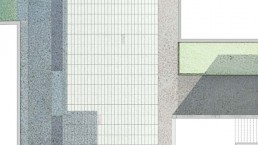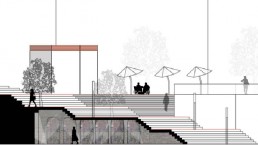DENSITY + OPEN SPACE / EAST VILLAGE
SEMINAR
SS 17
The current wish to live and work in urban areas is the main cause for the densification of city centres. Thus the pressure on open spaces rises twofold: inner-city open spaces are being built on and hence slip the urban fabric, at the same time the pressure of use on the remaining open spaces increases with the mounting number of inhabitants. The seminar investigates the relation of density and open space reflecting this current developments.
The seminar is structured in two parts: First, the topics of density and open space will be worked on by evaluating literature. In a second step, examples of very dense urban structures and related open space typologies are to be analysed, such as Buenos Aires, Seoul, Barcelona, New York, Berlin. Among others, the urban design parameters, the historical course of the densification process, the originated building and open space typologies, key figures of density and so on will be examined and contraposed. Also the question of the quality and functionality of the remained open spaces will be focussed upon.
East village is a quarter in New York’s district Manhattan, situated east of Greenwich Village and north of the Lower East Side. Different urban structures and open spaces such as the Bowery, Alphabet City and Tompkins Square Park are situated within the quarter. Once the centre of New York’s subculture, the East Village has now developed into a popular hotspot.
Distinctions within the consistent grid of 50m x 200m blocks can be identified by different green open spaces. They’re mainly part of the private parcels or block plots and though publically accessible entitled as ‘privately owned public spaces’ (POPS). The spaces emerge from the construction dependent on building height and floor area, determined by the New York City Zoning Resolution of 1961. Alternatively, open spaces and gardens can be found on the untilled plots, that have been appropriated within bottom-up processes. The open spaces within the blocks are the most common form of open space in the East Village.
Four basic types of these open spaces can be identified: low-rise buildings and a closed block edge often come along with narrow, partly parcelled green inner yards. Mostly, they are connected to the street with 2-3 stiches and rather privately used.
For large-dimensioned building generally situated at the short side of the blocks, the Zoning Resolution allows for fairly generous open spaces. Designed as urban squares or gardens they are part of the system of public open spaces.
In contrast, "pocket parks" emerged on the coherent plots that remained unbuilt on. They often border directly with the streetscape and thus are visible and present in the quarter. These spaces are generally designed and developed by neighbourly organized initiatives. During daytime, they are usually open to all visitors. By their dimension and the number of stakeholders involved building on these ‘pocket parks’ is quite unlikely.
In blocks, within which individual plots remained unbuilt on, community gardens laid out privately or by initiatives can often be found. They too are partly open for the public. The currently mounting building pressure in the quarter rises the danger that these spread open spaces within the blocks, created bottom up, will disappear. As they did not emerge out of the Zoning Resolution, these open spaces are not protected from construction. If non profit organisations like 'Manhattan Land trust' own the gardens they remain.
| Author/s | Kang Wang, Dipayan Bhowmik |
| Phase(EN) | Final Submission |
| Location | New York |
| Categories | Seminar |
